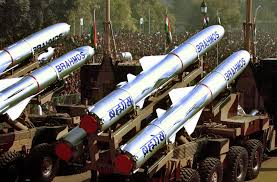NASA and DoD Conduct 3 High-Stakes Abort Drills to Safeguard $1.5B Artemis II Lunar Mission
NASA and the U.S. Department of Defense executed 3 critical abort drills to ensure the safety of the $1.5 billion Artemis II lunar mission—marking a pivotal step toward America’s return to the Moon
In preparation for the first crewed Artemis mission, NASA and the U.S. Department of Defense (DoD) have ramped up critical abort drills designed to guarantee astronaut safety, recover the Orion spacecraft, and iron out any potential failures before launch. These drills—conducted under mission‑ready conditions—serve as real‑world simulations to test every procedure, from emergency egress to splashdown recovery.
On August 1, 2023, teams from NASA and the DoD carried out Underway Recovery Test‑10 (URT‑10) off San Diego, practicing abort-to‑ocean recovery operations using a Crew Module Test Article (CMTA)

Navy divers simulated safe entry into the module post‑splashdown.
An inflatable “front porch” raft surrounded the capsule for safe crew transfer.
Navy helicopters transported simulated astronauts to a waiting recovery ship.
Entire sequence executed in under 2 hours from splash—a repeatable and scalable timeline .
NASA previously conducted the uncrewed Ascent Abort‑2 (AA‑2) test on July 2, 2019, topping off the Orion capsule on a converted Peacekeeper missile
Reached ~31,000 ft in 55 seconds with 500,000 lb thrust and Mach 1.3
Abort motor ignited within milliseconds, pulling Orion away from the booster.
Attitude-control motor flipped the capsule, then the jettison motor released the abort tower
12 data recorders ejected into the ocean as backups
Post-Artemis I, NASA undertook extensive heat-shield evaluations on Orion modules to simulate aggressive abort conditions—acoustic force, vibration, and lightning strike exposure
Engineers activated forward cover ejections, parachute compartment tests, and structural load tests in controlled high-stress environments
Launch on the SLS—the most powerful rocket globally, generating massive dynamic pressure and acoustic stress.
Beyond-LEO orbits where rescue isn’t possible—failures mean astronauts face peril alone
Thus, NASA mandates multi-layered abort capabilities—LAS, trajectory changes, even abort modes during lunar landing or ascent
- Pad abort validation (Pad Abort‑1 in May 2010)
- Flight abort validation (Ascent Abort‑2)
- Splashdown/recovery rehearsals (URT‑10).
- Component stress tests on ground—heat shield, parachutes, structural mounts.
Each step layers additional assurance for the inaugural Artemis II crew flight.
Target launch: Initially September 2025; delayed to April 2026 due to heat-shield adjustments
Crew: Four astronauts—Reid Wiseman, Victor Glover, Christina Koch (NASA), Jeremy Hansen (CSA)
Mission: 10-day lunar orbital flight without landing, first crewed test of SLS‑Orion capabilities .
| Drill/Test | Date | Purpose |
|---|---|---|
| Pad Abort‑1 | May 6, 2010 | Ground-launch abort; ensure LAS tower function |
| Ascent Abort‑2 (flight abort) | July 2, 2019 | Dynamic flight abort; verify full LAS sequence |
| URT‑10 Recovery Drill | Aug 1, 2023 | Ocean recovery; astronaut transfer & extraction |
| Heat-Shield & Vibration Stress Tests | Late 2023 – 2024 | Material durability; launch/emergency fidelity |
These drills illustrate NASA’s “test early, test often, and test under stress” methodology—essential for human deep-space missions.
Abort Motor – initial pull away from rocket.
Attitude Control Motor (ACM) – flips the module for parachute orientation.
Jettison Motor – separates the abort tower for clean descent
Crafted by Northrop Grumman and Aerojet Rocketdyne, these motors endure rigorous integration and component-level testing, with the final ACM motor delivery in August 2020
Ziplines, roller-coaster descents, and MRAP vehicles prepare for pre-launch emergencies
These drills ensure crews and technicians can escape a malfunctioning vehicle within seconds.
Apollo relied on sound abort modes and multiple escape systems tested through flight aborts and land-based simulations .
The Space Shuttle, by contrast, flew with no fully tested abort tower—a lesson learned post-Challenger
Orion/SLS inherits Apollo’s robust abort design but with modern sensor networks, fluid-dynamics modeling, and AFSS/AFTS autonomous flight termination systems
Astronaut lives are at stake: Artemis II will be the first crewed mission in over 50 years.
Technical complexity: SLS + Orion + deep-space transit + splashdown recovery = multiple failure points.
International prestige: Deep delays could cede momentum to competitors like China .
Mars mission foundation: Success here sets the bar for sustained lunar bases and eventual crewed Mars missions.
April 2026 launch window; hardware stacking and assembly currently underway .
Upcoming final URT recovery test next year to validate lessons from URT‑10.
Additional integrated abort drills expected, simulating partial failures across mission timeline.
Mission success will prove NASA‑DoD collaboration is robust enough to carry astronauts safely into deep space and back.
Read Also : Rathanyake optimistic that SL can take lead despite Bangladesh’s 484








